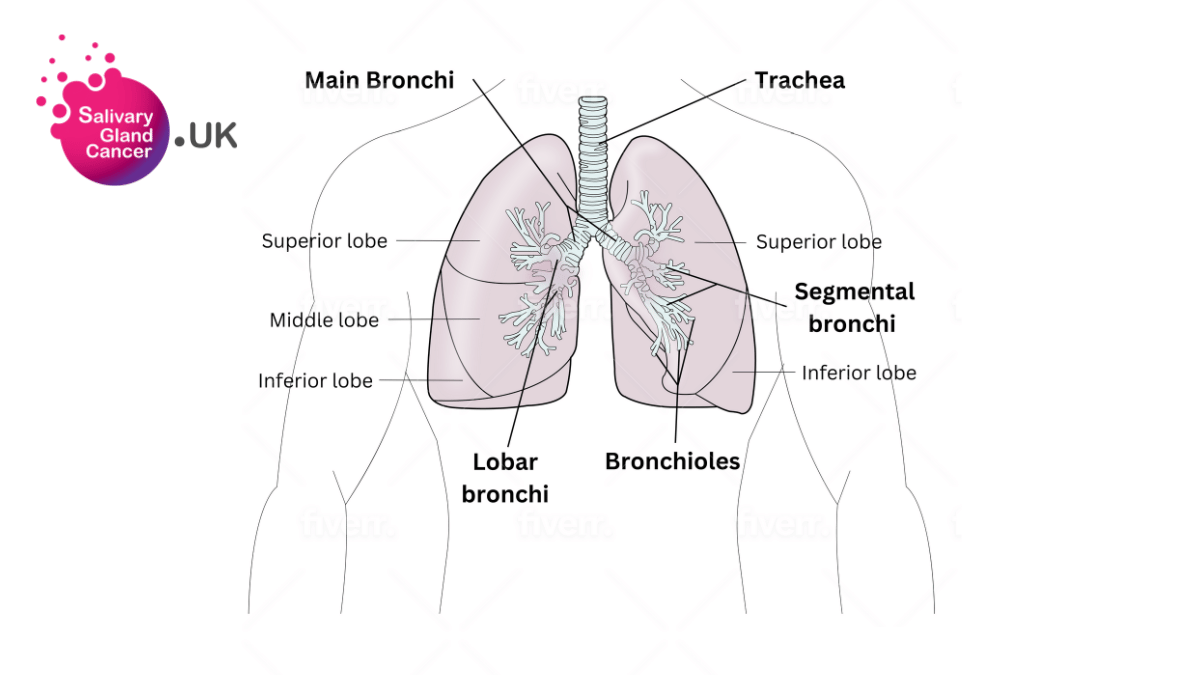Secretory Glands - The Lining of the Trachea
Tissues that are similar to salivary glands appear all around the body – including in the lining of the trachea – the tube that carries air in and out of the lungs.
Adenoid Cystic Carcinoma (ACC) is the most common form of salivary gland-type tracheal cancer - although cancer of the trachea is rare, with only one in a thousand cancer cases being found there. Other salivary gland-type cancers, including Acinic Cell Carcinoma (AcCC) and Mucoepidermoid Carcinoma (MEC), can also present in the trachea.
The trachea is between 10 and 15cm long and 2 to 3 cm in diameter. It runs from the back of the throat (where it is attached to the bottom of the larynx or voice box) to the carina, where it splits in two, opening out into the left and right primary bronchi. These bronchi then go on to branch into a series of smaller airways that run throughout the lungs.
Secretory glands with tissue very similar to that present in salivary glands can be found all across the inner surface of the trachea. They play an important role in protecting the lining of the airway, humidifying the air we breathe in and keeping the lungs healthy. The secretions they produce trap microorganisms, dust and allergens like pollen, which can then be swept back up the airway by tiny hairs called cilia.
Cancers such as ACC in the trachea are often misdiagnosed as other respiratory complaints, including asthma and COPD, as breathlessness is one of the key early symptoms.
Listen to Barry and Sarah, two SGCUK members with ACC in the trachea, talk about their diagnosis and treatment.

